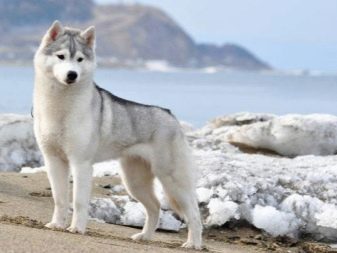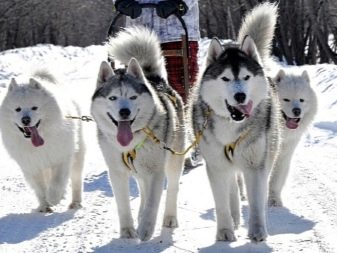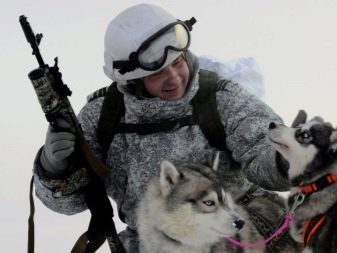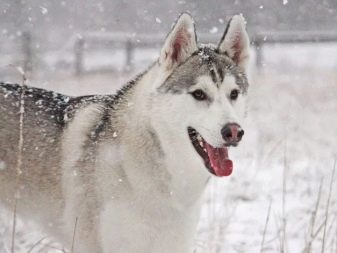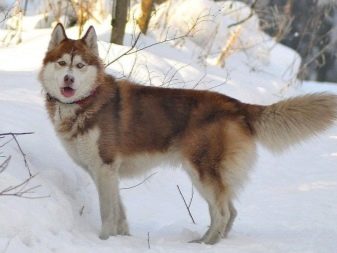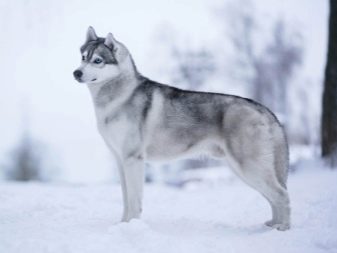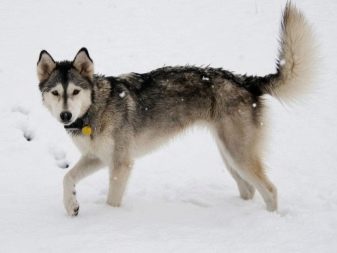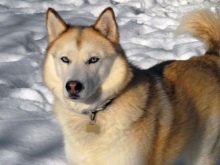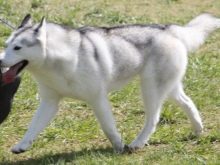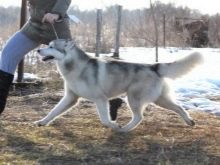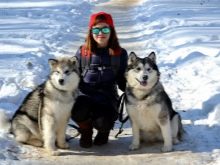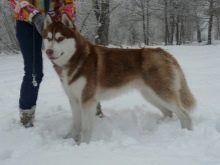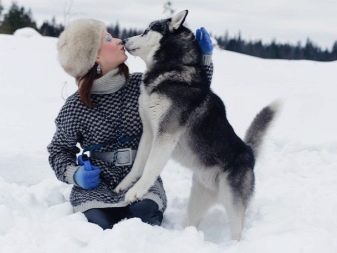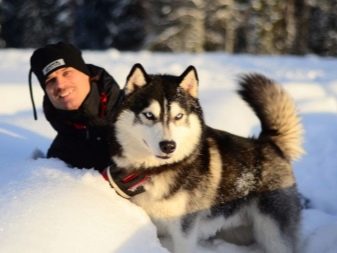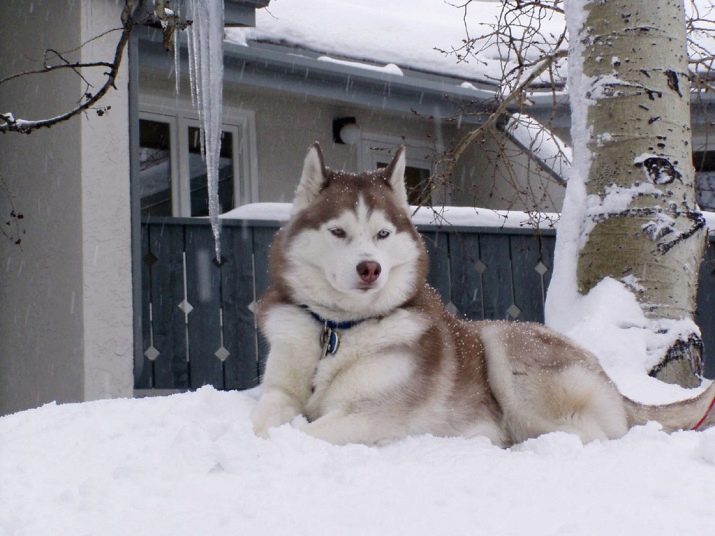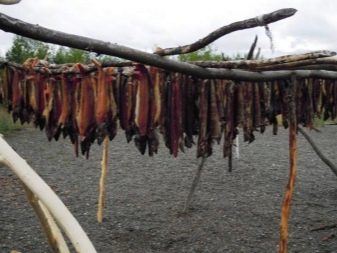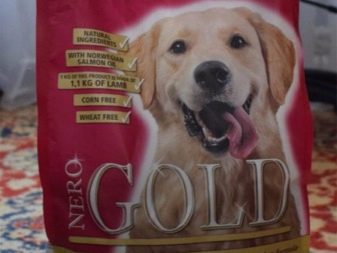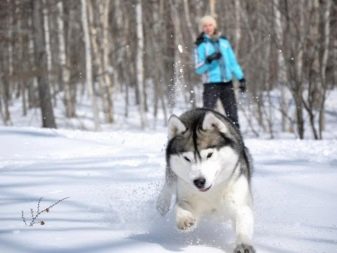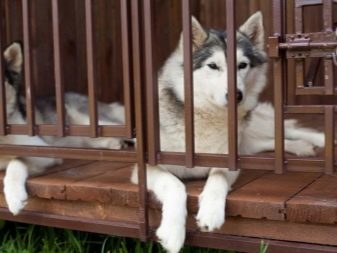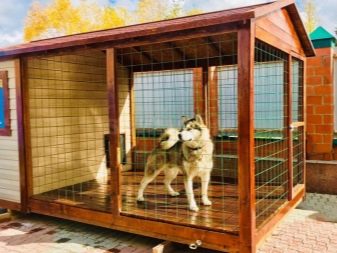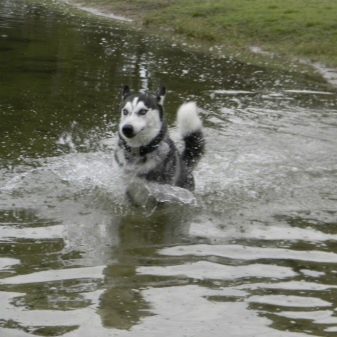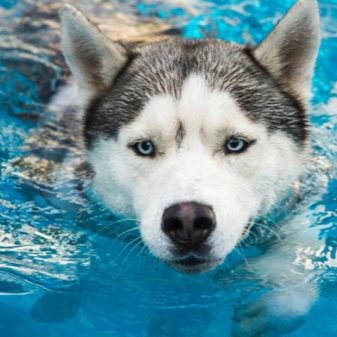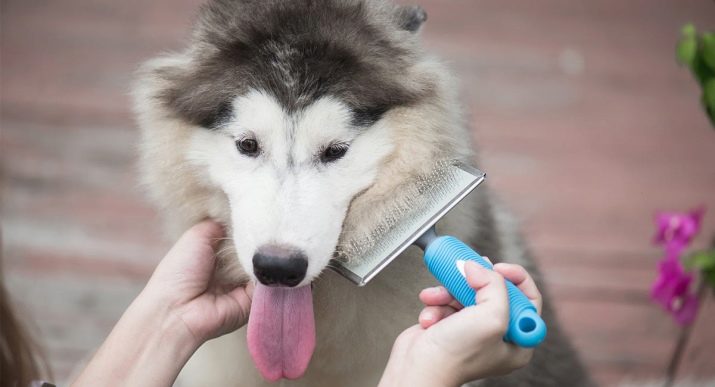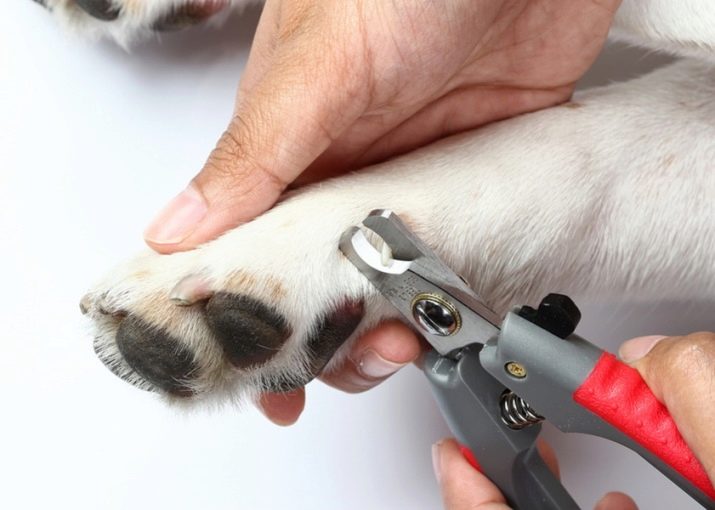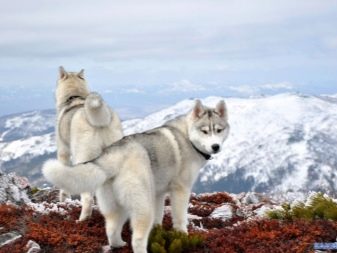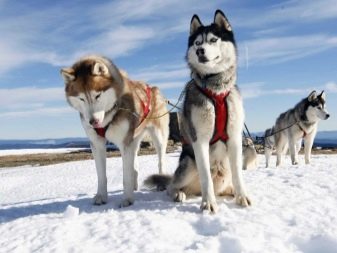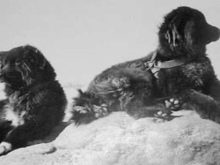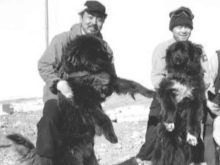The huge species diversity of domestic animals allows each person to choose a pet for the soul. The most common breeds and the most beloved are still dogs. To date, not all breeds can “boast” a large number of individuals, there are those where the number of individuals is negligible, and therefore the breed is on the verge of extinction, although it is unique in its kind. Sakhalin Husky belongs to this group.
History of origin
The name "Sakhalin" breed was primarily due to the habitat of these amazing dogs. Since ancient times, the small Nivkh people lived on Sakhalin Island, using dogs of this breed as sledges and for bear hunting. But, in addition to performing these important functions, the Sakhalin Huskies had another purpose - a cult one. It is a dog that, according to the tributes of this ancient people, must take Nivkh to paradise.
The word "Husky", standing second in the name of the breed, means a group of sled dogs, in which they included the Sakhalin huskies, as they are also called. In 1852, the Husky name was given to a group of dogs contained by the Inuit. So, according to some experts, this name is not quite true for Sakhalin dogs, since both Eskimos and Inuits lived in other northern territories, and the dogs they used in the harness are somewhat different from the Sakhalin group. It would be correct to call the Sakhalin husky “karafuto-ken”, which means “Sakhalin dog” in Japanese, since most sources point to the Japanese origin of this group of dogs.
This breed has another name associated with the people living in Sakhalin. They are called Gilyaks by the explorer Vasily Poyarkov, who described the Nivkhs and gave the people a new name - the Gilyaks in the 17th century.
Sakhalin Huskies were highly valued not only by the indigenous population, but also by the Russians who settled on the island. The breed, possessing endurance and the ability to cover fairly long distances across snow-covered territory, was used both in military maneuvers to deliver cargo and for peaceful purposes to transport ammunition and products of various expeditions. Individuals of this breed were also used to improve the characteristics of the other. At the beginning of the 20th century, the Japanese took it to Fr. Honshu are several representatives of the Sakhalin Husky breed for crossing with individuals of the Akita Inu breed. The remaining individuals of the breed have been quite successfully used as sled dogs not only on Sakhalin, but also in other territories of Russia. But unfortunately, in the 30s they were barbarously destroyed, finding that the maintenance of the Sakhalin Husky is too expensive for the state, and aviation can also be used for long-distance travel.
Today the breed is on the verge of extinction. In Russia, the number of purebred individuals does not exceed 20 (for 2014 there were no more than 10). In Japan, there are several nurseries, but the number of individuals in them is also small.
Breed characteristic
According to the classification of the ICF, the Sakhalin Husky breed belongs to the 5th group of Spitz and primitive dogs, and also corresponds to the description of the 1st section, which includes all types of sled dogs without working tests. Of all the types of sled dogs Sakhalin dog is the largest. And this is not surprising, because its intended purpose is to transport goods and people over long distances in harsh climatic conditions. The height of an adult dog at the withers is 60–65 cm, and some individuals can reach 70 cm. Bitches slightly lower, their height varies between 50–60 cm. The average weight of the representatives of the breed is between 25–40 kg.
Purebred specimens of this breed have a fairly strong bones and well-developed muscles. Their strong body, though it has decent dimensions - its length is greater than the height at the withers - but rather harmoniously folded.
A characteristic feature of the individual is an even body without a sagging back, with a well-developed lumbar region and a rather wide, but not long neck. The high-ranking tail is most often a pole-shaped form, but there are also representatives of the breed with a saber-like shape and a characteristic arrangement: it is tilted backwards with a slight shift to the lateral region. A typical representative of the breed has a large head with a slightly pointed muzzle. The ears are small with well developed cartilage tissue, which is why they are always in a standing position. In shape, they are more like an accurate isosceles triangle. The eyes, though small in size, have a very beautiful almond shape. Eye color varies, there are individuals not only with the blue color of the cornea, but also with hazel, and is also considered permissible, although there are no fixed standards, the presence of multi-colored eyes, where one can be brown, and the other - blue.
The purpose of the Sakhalin dog is primarily walking in a harness.therefore, the limbs of a typical representative of the breed are strong enough with perfectly developed muscles, allowing animals to move quickly along any surface rather quickly and without stiffness in the joints. Straight-set and parallel to each other, the limbs are equipped with large rounded legs with well-developed fingers and powerful claws.
A distinctive feature of the breed is the coat. The Sakhalin dog has a thick coat with a dense undercoat and a hard, close-to, vegetation cover. In the area of the muzzle and the outer side of the extremities, the wool is less thick, and the guard hair is somewhat shorter compared to the body. The color of animals of this breed may be different, there are no clearly defined standards. Black, gray, red and even brindle color of a typical representative of the breed is possible, but not white. Color can be solid and consist of only one color, and can have a pattern and consist of two colors. Most often you can find individuals with a gray-white color. For the Nivkhs, the color of the dog had its sacral meaning; more than others, individuals with a tiger spotted pattern of wool were honored by them.
The life span of individuals of this breed is in the range of 16–20 years.
Character and behavior
Sakhalin Huskies are very loyal and friendly animals. They get along superbly not only with the owner, but with all members of his family. They treat strangers quite calmly, without aggression. But at the slightest danger from the stranger may well rush to the defense of the owner. And it is not surprising, Sakhalin dogs are not cowardly, well-developed hunting instinct, multiplied by courage and bravery, allowed them to cope not only with small marine life, but also with such a large beast like a bear. Dogs of this breed are very active and curious. They just love to run fast and explore all the hidden corners. In dogs, there is a love for long runs in the blood, because the breed belongs to the group of sled dogs for whom great physical exertion is not a problem.
The Sakhalin Husky will be a great friend and companion for people leading an active lifestyle, since without movement and constant communication with the owner, he will simply “wither away”.But their activity and curiosity have a flip side - the love of vagrancy. The Sakhalin Husky is not averse to running far from home, and even an aviary with thick rods is not a hindrance to it - it will make a dig or find a way to open the latch.
Bold and hardy Sakhalin dogs also have good intelligence. They remember all the teams very well and perform them perfectly, if, of course, the owner has managed to prove to the dog that he is the only one (leader). But even with complete subordination to a person, dogs of this breed for their rude attitude may take revenge, since they are incredibly touchy and stubborn.
Sakhalin Huskies rarely bark, most often they howl. This is especially evident if an animal remains without a company for a long time, because it is rather difficult for them to be alone for a long time, they miss and yearn for the people they are attached to, and for this reason they may even get sick. Sakhalin Huskies are convivial animals and very loyal to their owners, therefore long separation and loneliness are absolutely contraindicated for them.
Feeding and care
Good nutrition is a guarantee of good health and long life for any living organism. For the Sakhalin Husky, a properly formulated diet is of paramount importance, since their activity and performance depend on its quality and composition. Genetically, their digestive system is better adapted for digesting sea fish., moreover, the Nivkhs always fed them only chum salmon ridges, the sirloin was intended for people. In modern conditions, it is extremely difficult to reproduce such a diet, firstly, because of the required amount (the Nivkhs harvested at least 400 fish per dog), and secondly, because of the high cost of such feeding, because chum is not cheap fish. Therefore, in modern conditions, such dogs are fed either with industrial feed, or they make up a balanced diet as close as possible to the type familiar to the breed.
With the natural type of feeding must be present: sea fish, meat (best beef or venison, and together with cartilage), offal, eggs, dairy products (the ideal option is cottage cheese, but kefir is also possible); cereals (oatmeal, buckwheat, rice), vegetables, bone meal and vitamin and mineral supplements. Do not feed the dogs with leftovers from the table, as salty, and even more smoked products adversely affect the health of dogs. Such products as: potatoes, all types of flour products, all types of legumes, as well as tubular (hollow inside) bones should be completely excluded from the diet.
Feeding the Sakhalin Husky with industrial feed is less desirable, as they are not particularly fond of such food. But if there is no other choice, then super-premium and holistic feeds are best for them. When buying, you should pay attention to the composition: the higher the percentage of animal protein - and in good types of feed it is usually not less than 70% - the better for the health of the dog. Yes, and harmful to the body flavoring they are not.
Sakhalin Huskies are not picky in their content, they tolerate very cold weather and do not need warm constructions. The best way to keep dogs of this breed is a spacious outdoor enclosure, rather than a close kennel or a warm apartment.
Such content is fully justified, since their behavioral responses are very specific and not always predictable. One of the highlights is, of course, a howl, and what is interesting: They make these drawn-out sounds not only during the day, when they miss the host, but also at night, the wolf genes in this case make themselves felt. But if a dog is physically loaded enough during the day - and she needs to run for no less than 40 km daily - then she will hardly have any strength left for the howling, and also for the digging too. But just in case, the enclosure does not hurt to strengthen in all places, the fence should be reliable, high, strong and with good elaborate deadbolts.
Dogs do not tolerate heat very well, and this is not surprising, since the natural habitat of dogs of this breed is north of Sakhalin, and the climatic conditions there are very harsh. Therefore, in the summer, it is better to take the dog for a walk early in the morning or after 6:00 pm, when the sun is not so hot. The place for the enclosure also needs to be selected taking into account the characteristics of the breed: it must be covered from direct sunlight.
Not only conditions should be special for this dog, but also the care itself. Although the individuals of this breed and unpretentious, but still monitor the condition of the hair, ears, eyes, teeth and claws is necessary.
A characteristic feature of the breed is the absence of a specific smell from the dog. But if the dog is very dirty, then, of course, you can wash it in warm water using a special shampoo for dogs. But, as a rule, Sakhalin Huskies prefer to swim in open reservoirs and do not really need shampoos and balms. Under domestic conditions, dogs can wipe contaminated areas with a normal wet sponge.
The dog's coat should be cared for using a procedure such as combing. At least 2 times a week using a comb with often spaced teeth you need to walk all over the coat. During the period of molting, the procedure is carried out more often, and instead of a comb, a poucher is used. Ears should be inspected regularly for ear mites. The constant scratching of the auricle and the brown deposits inside are bright symptoms of this disease. If you have these signs, it is best to go to the veterinarian: he will not only prescribe the necessary medication, but also tell you how to carry out the procedure correctly.
Particularly noteworthy is the oral cavity of the animal. During the inspection it is necessary to pay attention to the condition of the gums and tooth enamel. The gums should have a healthy pink hue, and there should be no dark spots on the enamel. An excellent prophylactic against tartar are special dental bones.
The claws of dogs who regularly take long walks do not need to be trimmed, as they grind off naturally. But in conditions of flat content or at low physical exertion, claws must be trimmed with a clipper. Regardless of the method of maintenance after each walk, it is desirable to examine the paws of the dog. If even small cuts are found, it is better to carry out the treatment immediately, in order to prevent suppuration. Sakhalin huskies have good health from birth, but they are still in unusual habitat conditions, and therefore there is a high probability of contracting viral, infectious and parasitic diseases.
To protect dogs from most diseases, they need to be vaccinated regularly, as well as anti-parasitic measures.
Interesting Facts
Breed Sakhalin Husky famous throughout the world thanks to one tragic event that occurred in February 1958 in Antarctica. A group of scientists from Japan went on an expedition, accompanied by 15 representatives of this unique breed. But due to unfavorable conditions, Japanese researchers were forced to leave the continent, leaving the dogs in the parking lot with a small supply of food. They expected to return soon and pick up the dogs, but unfortunately, adverse weather conditions did not allow them to do so. Only a year later, people were able to return to the parking lot, and were very surprised to find two surviving dogs! Of the 13 dogs, 8 were never found, and 5 were found dead, they could not free themselves from the leash.
Two surviving dogs Taro and Jiro became national heroes, and based on these tragic events they made 2 feature films. The first one was shot by a Japanese director in 1983, it is called “Antarctica”, and a little later the Americans shot a remake of “White Captivity” based on the motives of this film. The fate of the surviving dogs was different.Jiro died two years later in a regular expedition, and Taro was transported to a university on the island of Hokkaido, where he died at the age of 20 years.
To learn how to properly care for the Sakhalin Huskies, see the next video.



